Feel the Sting and Know the Symptoms of West Nile Virus: Meet Batman, a Polo Pony Who Survived WNV
- March 10, 2017
- ⎯ Fran Jurga
[VIDEOSINGLE type=”youtube” keyid=”IfQJ3nxFd6c”, width=”560″, height=”344″]
Dr. Tom Lenz explains the symptoms that accompany the West Nile Virus infection in horses. Thanks to the American Quarter Horse Association for this video.
It’s everywhere.
Because they’re everywhere.
“It”, of course, is the danger of West Nile Virus (WNV) and Eastern Equine Encephalitis (EEE); both have been infecting horses from coast to coast this summer.
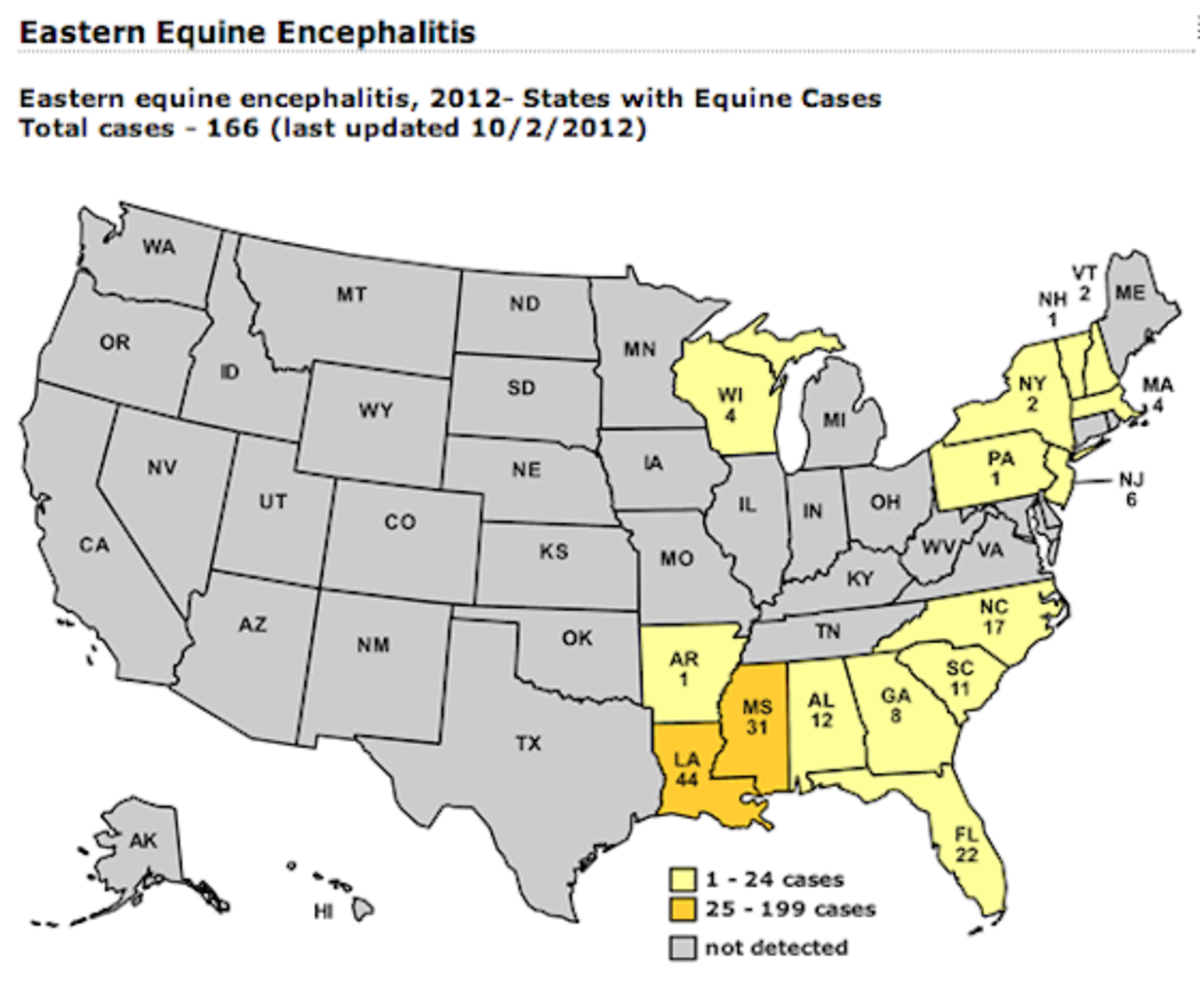
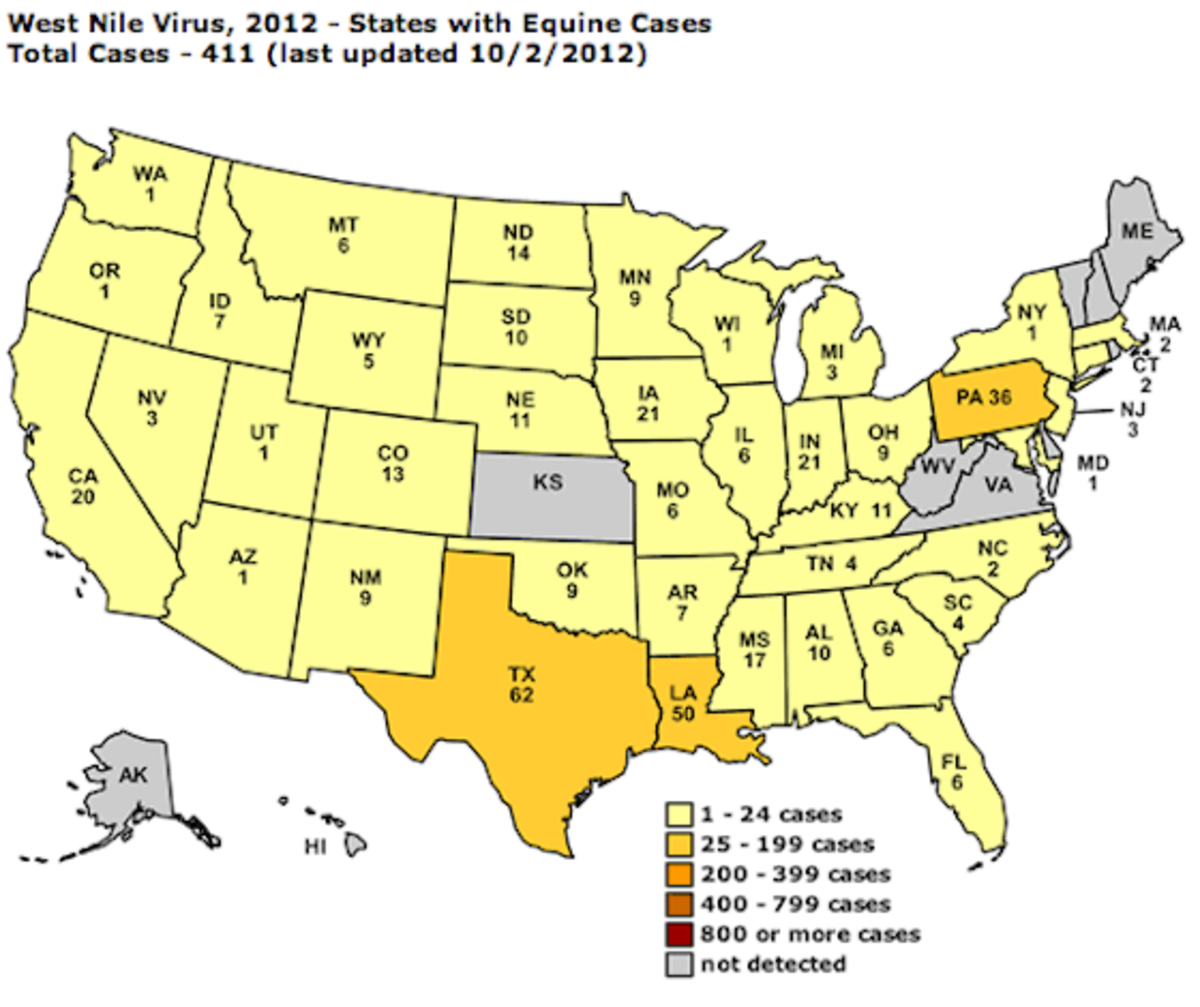
And “they” are the mosquitoes buzzing around our horses, our barns, our shows and our racetracks. All the fly spray, all the masks and all the barn misters in the world can’t protect a horse 24/7.
West Nile Virus has affected humans in all 48 mainland states.
It’s October now, and the first snow has fallen in northern New England and the Rockies. But for much of the country, mosquito season will linger on, and the case numbers are sure to increase more.
Consider the totals:
- 2012 EEE: ?166 horses as of October 2
- 2011 EEE 60 horses for calendar year
- 2012 WNV 411 horses as of October 2
- 2011 WNV 87?horses for calendar year
This is the story of one of a horse with West Nile Virus that didn’t die.
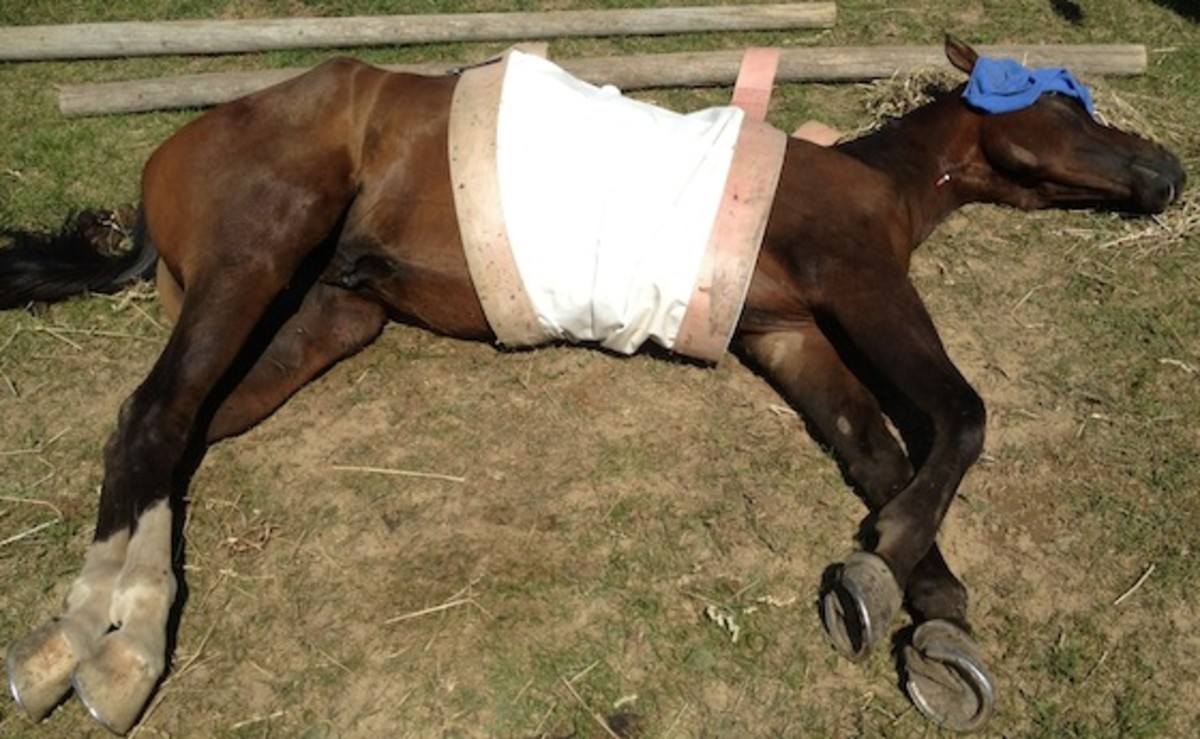
On September 11, authorities in Florida reported the first West Nile Virus case in a horse in Palm Beach County. The horse had been euthanized and test results confirmed WNV.
For the?Palm Beach Equine Clinic in Wellington, Florida, the test results on that horse meant that they were fighting WNV on two fronts at two of their clinics, the main hospital in Palm Beach and the affiliate practice on Long Island.
The “vaccinate-vaccinate-vaccinate” mantra has been chanted throughout the horse-owning community from coast to coast. Even so, almost 600 horses in the United States have been infected.
Most of those horses have been euthanized.
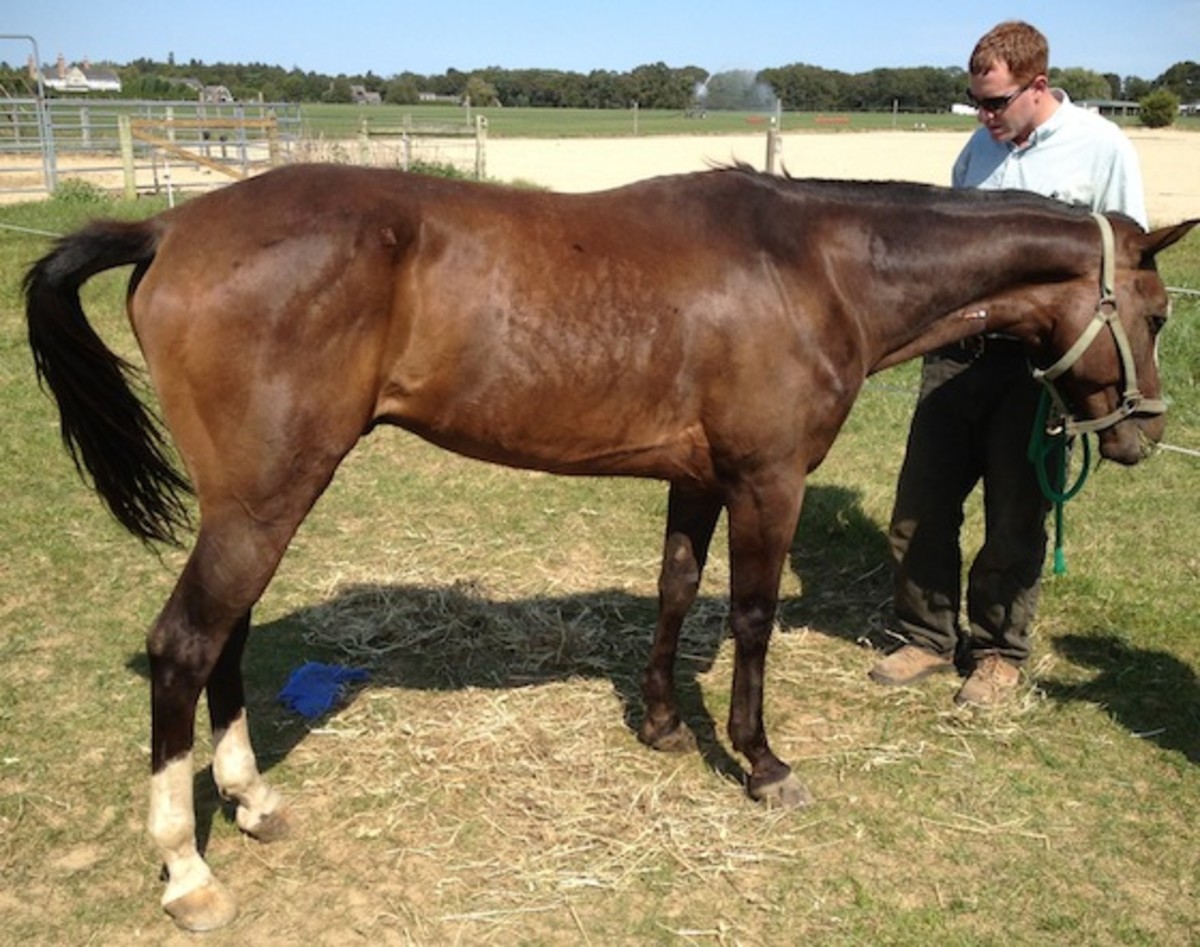
What happens when a horse is infected with West Nile Virus? Dr. Lenz’s video for the AQHA shows you the symptoms, but in a nice, controlled veterinary hospital setting.
Imagine being a horse owner at home alone with a horse that can’t eat or drink. A horse that staggers and may even fall down.
What would you do for a horse that might not be able to get up?
In New York today, two additional cases of West Nile Virus were reported. The first case was a?gelding with a slight fever; he had been found down in the field by the owner. ?The owner called the veterinarian who instructed the owner to give an NSAID before the vet could arrive. ?By the time the veterinarian arrived, the horse was standing and further medical treatment was initiated.
The next day, the gelding had an increased fever, fine facial fasciculations (twitch), ? hyperesthesia (acutely sensitive to touch) and weakness but a good appetite; he was still standing. ?Blood samples sent to the NYS Veterinary Diagnostic Laboratory confirmed West Nile Virus. ?As of Friday, the gelding is still alive and recovering under veterinary supervision.
In the second New York case, a mare was found to be acutely neurologic by her owner. ?She exhibited ataxia on all four limbs, with the hindlimbs more affected than the front. ?The mare had a fever, hyperesthesia and was biting at the air and holding her head in an abnormal position. ?Blood samples sent to the NYS Veterinary Diagnostic Laboratory confirmed West Nile Virus. As of yesterday, the mare is still alive and recovering under veterinary supervision.
Batman is an eight-year-old polo pony with some problems. He was out on the eastern end of New York’s Long Island, but far from the glitz of the high-goal polo being played there. Batman was underweight and he was very sick. He was showing unusual symptoms. And his vaccinations were not up to date.
Batman started showing signs of paresis (partial paralysis in all four limbs) on Friday, September 14th. By the next day, Batman was down–“lateral recumbency” in vetspeak–and could not get up.
Palm Beach Equine’s Dr. Bryan Dubynsky and his Long Island team treated Batman aggressively and by Saturday evening he was able to stand on his own. The victory was short-lived, however. On Sunday, he was down again and Batman could not stand on his own.
“On Monday we decided to use a sling and bucket loader on the tractor to help him stand while we continued an aggressive treatment program,” stated Dr. Dubynsky.
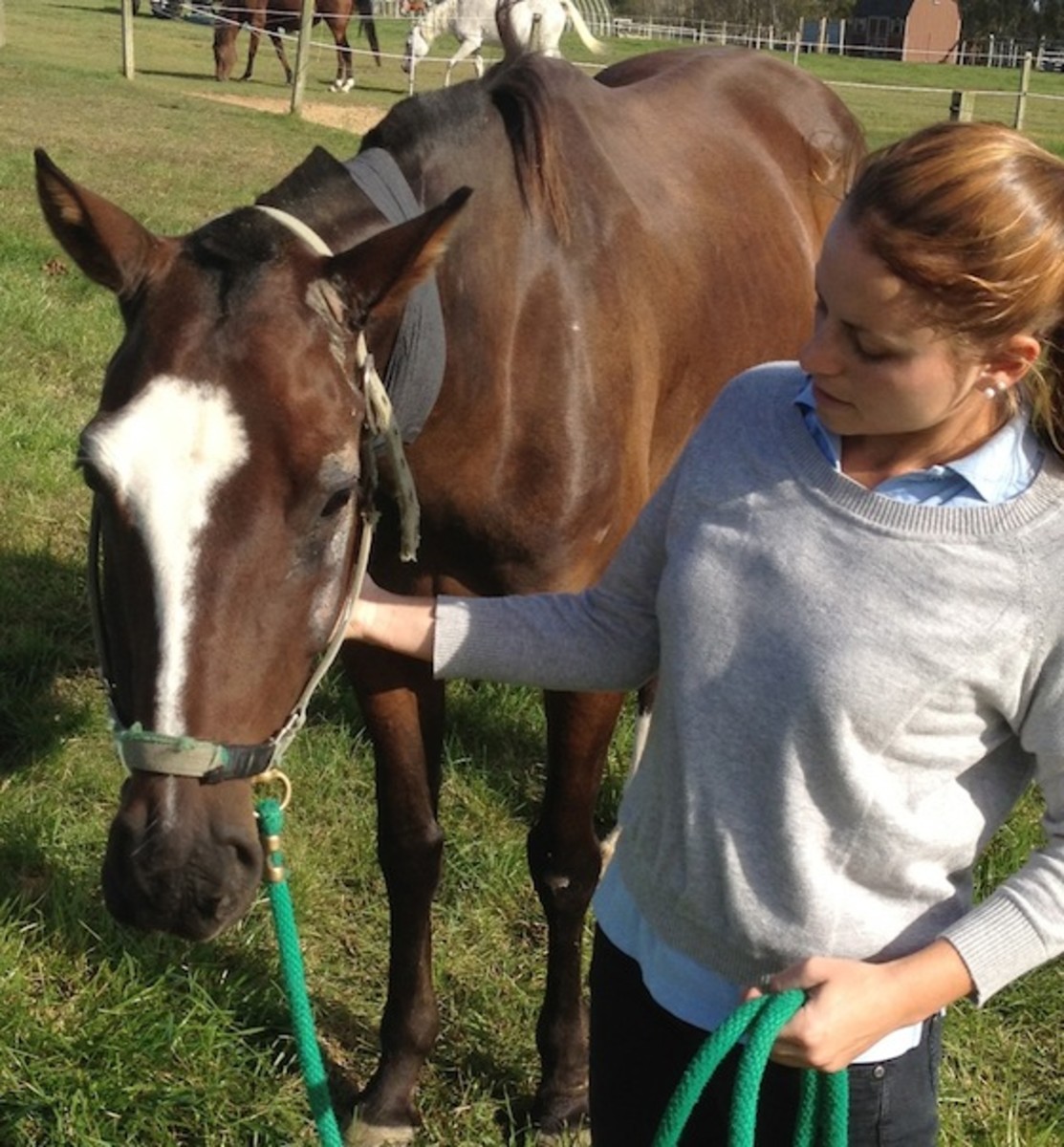
As the week progressed, Batman was standing on his own and is now recovering nicely. ” It was a big team effort by my Long Island associates and staff and the good people of Southhampton,” said Dr. Dubynsky. ” I would like to thank all the people that helped make the recovery of this horse a success.”
Even though it is heartening to read about Dr. Dubynsky’s successful effort to save Batman’s life, recovery is not always complete for horses with West Nile Virus. Some horses have neurological damage or some degree of gait abnormality after they have recovered.
Veterinarians in the United States and Canada urge all horse owners to check their horses’ records and make sure that their horses are up to date on their vaccinations.
To learn more:
Penn State University Extension information sheet on West Nile Virus (free download)
AAEP Background Information on West Nile Virus and Vaccination to Prevent It
Palm Beach Equine Medical Centers are located in Wellington, Florida; Aiken, South Carolina; Lexington, Kentucky; and Long Island, New York.
Thanks to Dr. Courtney L. McCracken, NYS Department of Agriculture & Markets and CCE Equine for help with the recent New York cases.





